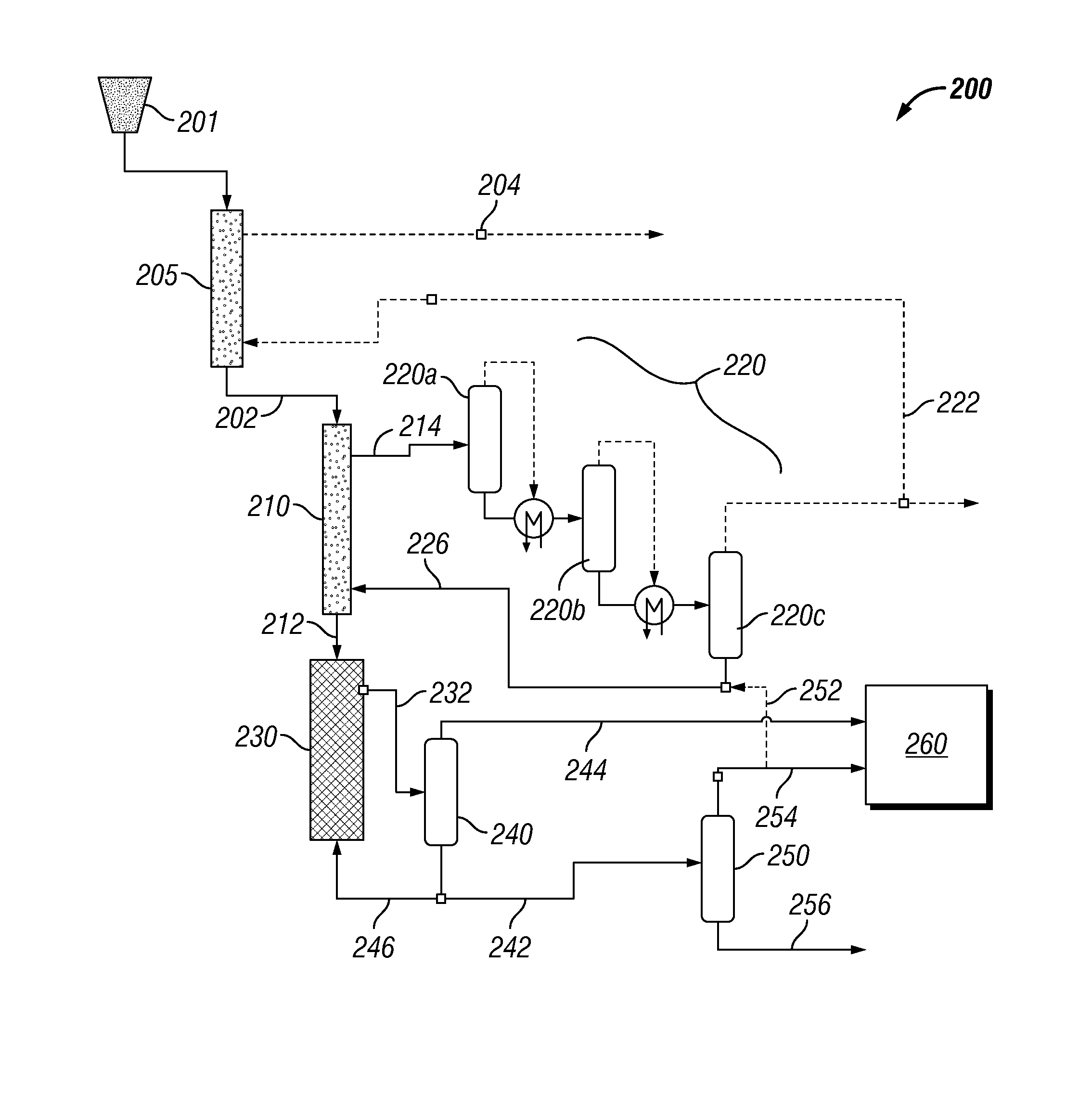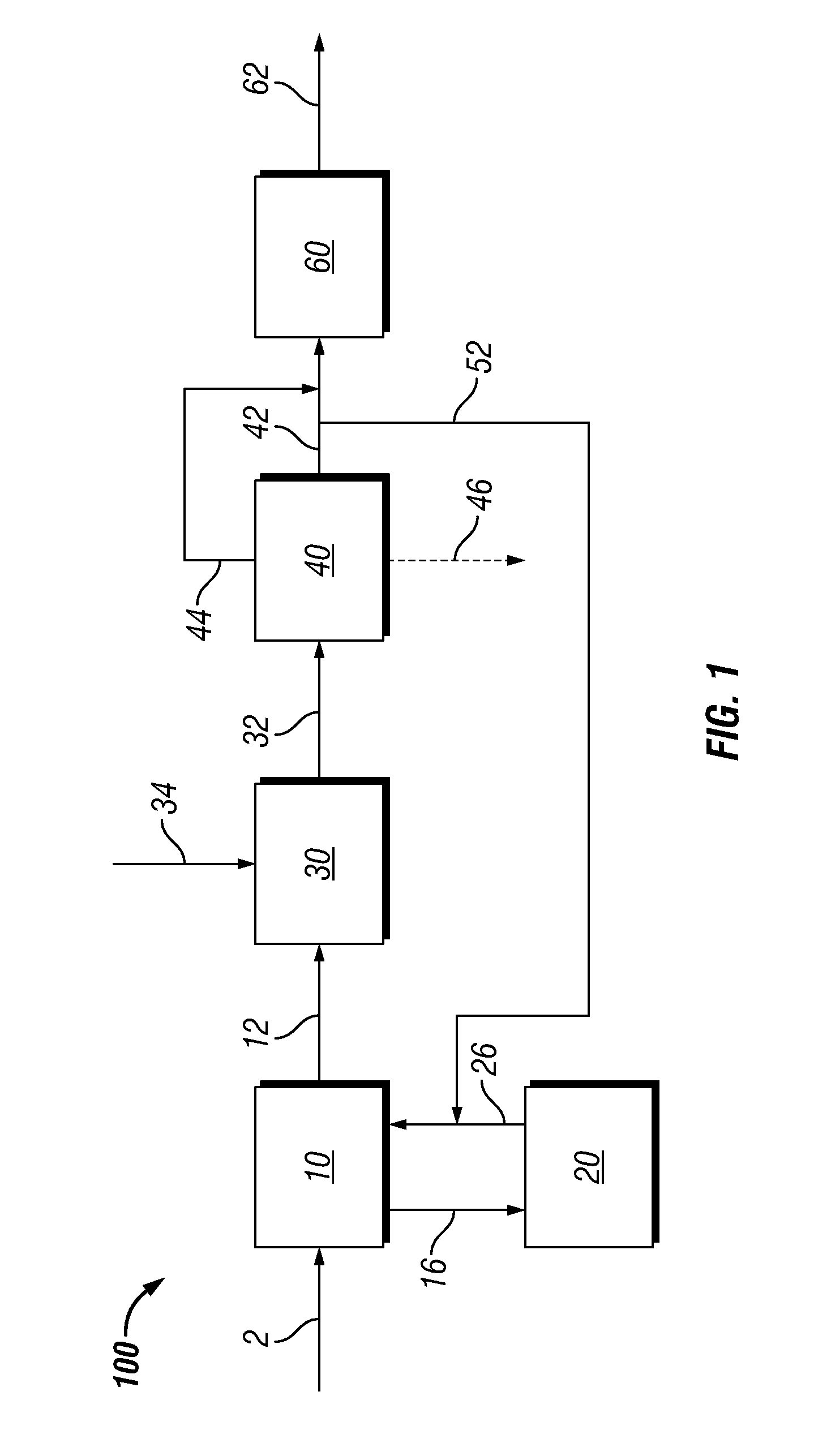Biomass pretreatment for hydrothermal hydrocatalytic conversion
a technology of hydrocatalytic conversion and biomass, which is applied in the direction of fuels, lignin derivatives, organic chemistry, etc., can solve the problems of difficult penetration of lignocellulose biomass with chemicals, difficulty in breaking down the long chain polymer structure of cellulose into carbohydrates that can be used to produce fuel, and difficulty in reducing the long-chain polymer structure of cellulose into carbohydrates, so as to reduce the effectiveness of hydrothermal hydrocatalytic treatment and minimize the amount of hea
- Summary
- Abstract
- Description
- Claims
- Application Information
AI Technical Summary
Benefits of technology
Problems solved by technology
Method used
Image
Examples
examples 1-3
Drying of Wood Chips
[0095]Southeastern US pine wood of nominal 58-60% moisture content was ground to a dimension of approximately 8-mm×3-mm×3-mm using a “Retsch Grinder” Model SM100 rotating knife blade grinder. 2.697 grams of the ground chips were place in a vacuum oven operated at an absolute pressure of 100 Torr, and a temperature of 60° C. A slow N2 purge was added to the vacuum oven (10-20 ml / min) to facilitate water removal.
[0096]The wood sample was reweighed periodically to assess moisture content. The initial moisture content was reduced from 58.6% to 34.3% after 40 minutes, and to 13.4% after 58 minutes. By 110 minutes, moisture content was less than 0.5%, as confirmed by overnight drying.
[0097]The experiment was repeated with 3.61 grams of wood at an initial moisture content of 53.3%. Moisture content was reduced to 25.2% after 40 minutes, and 11.8% after 58 minutes.
[0098]A larger batch of ground pine wood (29 grams) was subsequently dried to a moisture content of 12%, and...
example 4
Steaming of Wood to Fully Saturate
[0099]Samples of ground pine wood which had dried in air to 34% moisture, were steamed in a food steamer (Oster) for 1 hour. The ground wood was rolled in a paper towel to remove surface moisture, and dried in a vacuum oven overnight to assess moisture content at full saturation. 54% moisture was determined.
example 5
Digestion and Reaction of Wet Pine Wood (Nominal 54% Moisture)
[0100]A 100-ml Parr reactor was charged with a 24.76 grams reaction solvent mixture comprising equal proportions of tetrahydrofurfural alcohol, methyoxypropylphenol, 2-pentanol, cyclohexanone, ethanol, ethylene glycol, propylene glycol, and glycerol, with 2.7 wt % deionized water. The reactor was then charged 013 grams of KOH buffer, and with 1.8 grams of nickel-oxide promoted cobalt molybdate catalyst (DC-2534, containing 1-10% cobalt oxide and molybdenum trioxide (up to 30 wt %) on alumina, and less than 2% nickel), obtained from Criterion Catalyst & Technologies L.P., and sulfided by the method described in US20100236988 Example 5. 3.4 grams of the pine wood of nominal 54% moisture, were charged. Nominal 35 bar of hydrogen was added, and the reactor was heated to 190° C. for 1 hour before ramping over 15 minutes to a temperature of 250° C. for 3 hours, giving a total cycle time of 4 hours.
[0101]The cycles were repeated...
PUM
| Property | Measurement | Unit |
|---|---|---|
| pressure | aaaaa | aaaaa |
| temperature | aaaaa | aaaaa |
| boiling point | aaaaa | aaaaa |
Abstract
Description
Claims
Application Information
 Login to View More
Login to View More - R&D
- Intellectual Property
- Life Sciences
- Materials
- Tech Scout
- Unparalleled Data Quality
- Higher Quality Content
- 60% Fewer Hallucinations
Browse by: Latest US Patents, China's latest patents, Technical Efficacy Thesaurus, Application Domain, Technology Topic, Popular Technical Reports.
© 2025 PatSnap. All rights reserved.Legal|Privacy policy|Modern Slavery Act Transparency Statement|Sitemap|About US| Contact US: help@patsnap.com



